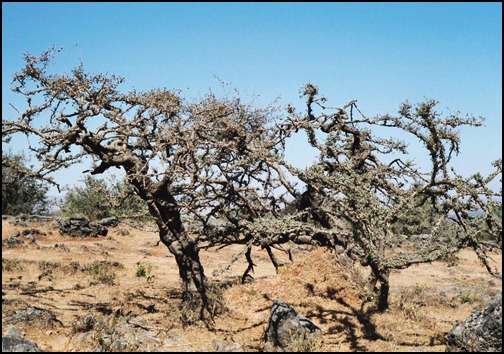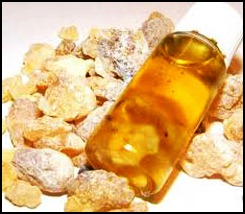
Frankincense
SCIENTIFIC NAME:(Boswellia carteri)
A sap that comes from trees in the Boswellia family, Frankincense is mainly harvested in the Sultanate of Oman, a small country just south of Saudi Arabia.
Since the birth of Christ, Frankincense, Myrrh and other resin releasing desert shrubs in the Holy land have been confused with one another. Even experts have a difficult time telling the difference between those in the Boswellia family.
Common Names:
Olibanum, Indian Frankincense, Arabic Frankincense, Salai Guggal

Uses:
Frankincense has been used for hundreds of years for treating arthritis, healing of wounds, strengthening the female hormone system, as an anti-inflammatory, and for purifying the atmosphere from undesirable germs.In a March 18, 2009 BMC Complementary and Alternative Medicine journal, there was a report about a study performed by the University of Oklahoma's Health and Sciences Center, Frankincense oil was said to be able to differentiate between cancer cells and healthy cells when exposed to human bladder cancer, making it a possible alternative treatment for bladder cancer.
Applications:
Capsule:
Typically, 300 mg to 400 mg three times per day. Look for products with 60-percent Boswellic acids, the active ingredient.
Inhalation:
Incense can be burned and breathed.
Oil:
Can be applied to clean cloth and inhaled to calm spastic bronchial.






